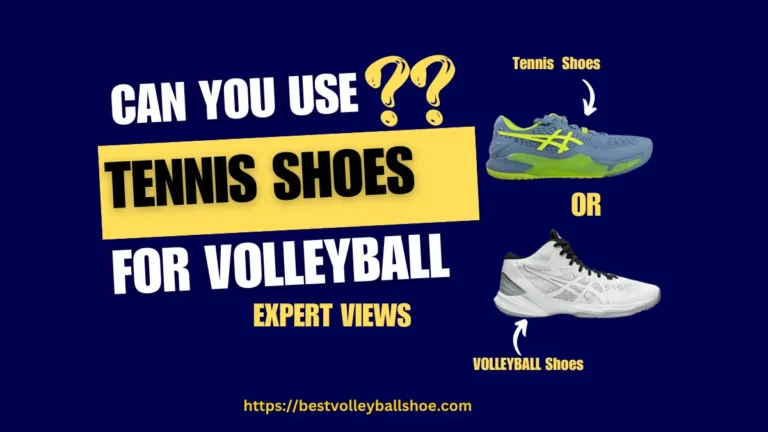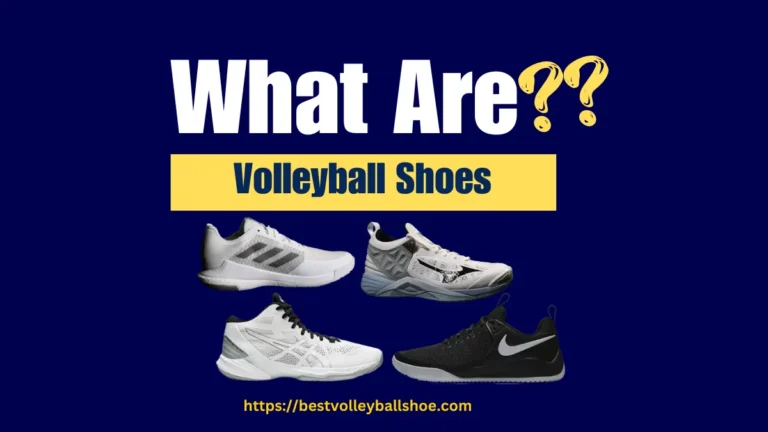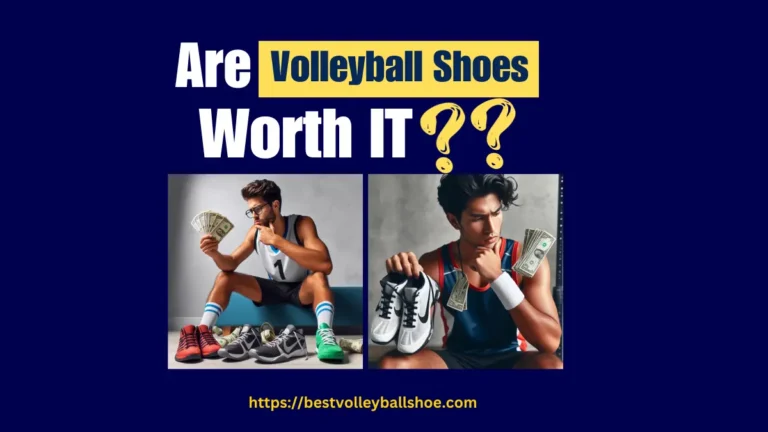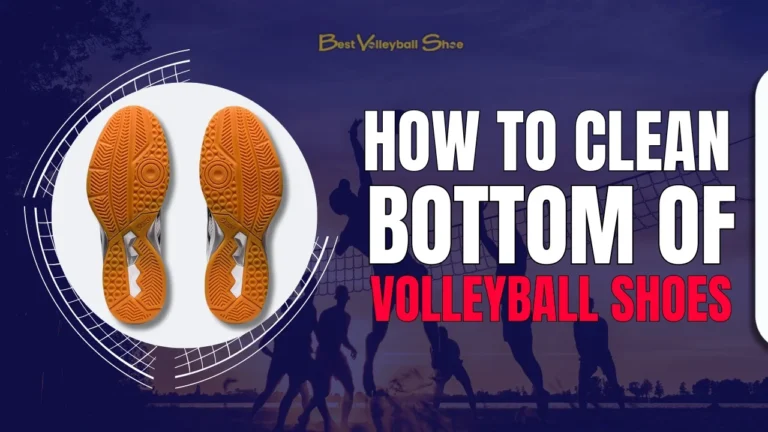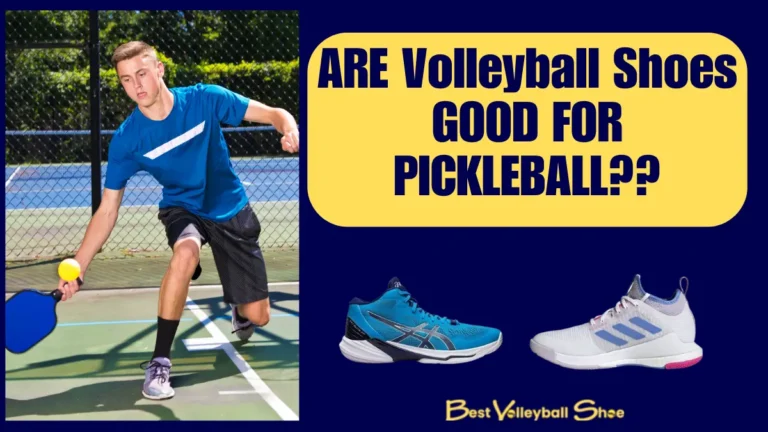What is a Kill in Volleyball? Techniques, Types, and Tips
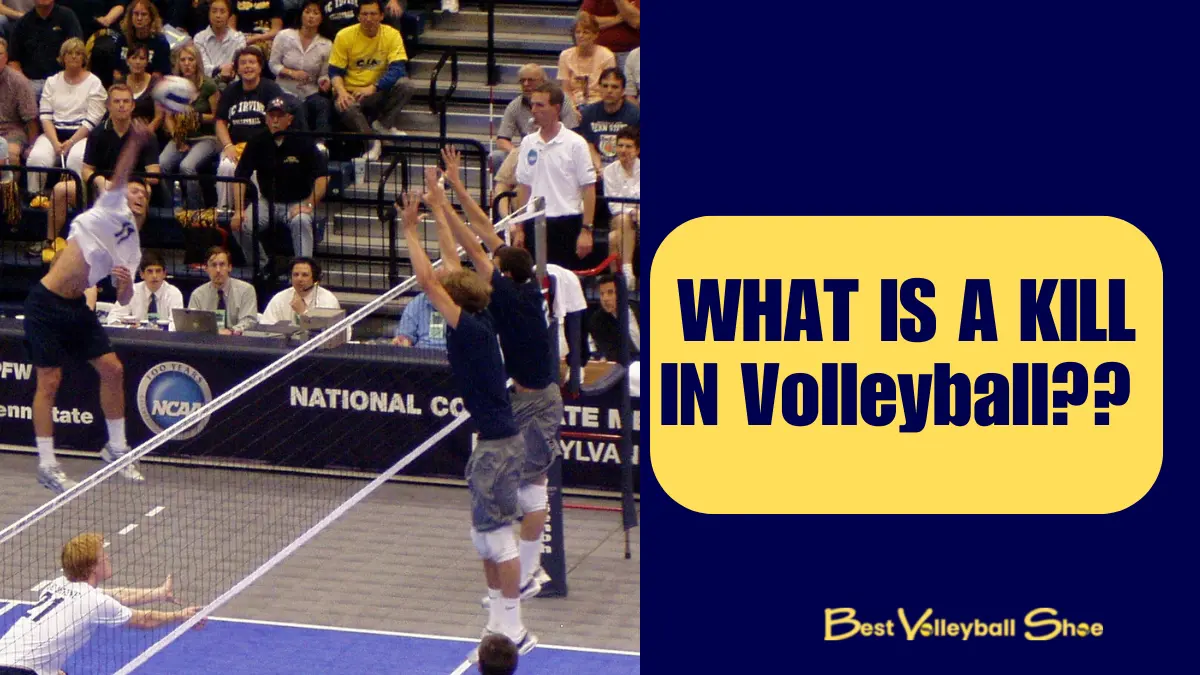
Like every game has its own set of rules, these games also have their own set of special terms. Various terms are used for volleyball, such as dig, spike, bump, and many more. Among these terms, one term that often comes up in volleyball discussions is “kill.” Many newbies are unfamiliar with it and often ask, “What is a kill in volleyball?”
Simply put, a kill is one of the most powerful and successful offensive attacks that is unreturnable by the opponent, resulting in a point being scored. It may sound easy but requires complete practice, skill, strategy, and technique.
If you want to learn about a kill, how it’s executed, and its significance in the game, read the entire article carefully.
What is a Kill in Volleyball?
In volleyball, a kill is when a player hits the ball over the net and immediately scores a point. This happens when the ball lands inside the other team’s court or when the other team can’t hit the ball back. Getting a kill is the main thing that players try to do when they are attacking. It’s important because it helps their team get more points.
The Importance of Kills
Kills are really important in volleyball. They don’t just help a team get points but also serve as a powerful psychological tool. A well-executed kill can boost the morale of the attacking team while simultaneously deflating the opponents’ confidence.
If a team keeps getting kills during the game, it can make the other team feel a lot of pressure and force them to make errors or play more conservatively.
How to Execute a Kill in Volleyball?
Executing a kill in volleyball requires technical skill, power, and strategic placement. Here are the key steps involved in performing a successful kill:
1. Approach
The first step in executing a kill is the approach. Players must time their steps and correctly position themselves to generate maximum power and accuracy. A typical approach consists of a three-step sequence: a long step, a short step, and a jump.
2. Jump
After the approach, players must jump vertically to gain height above the net. A higher jump allows attackers to hit the ball at a steeper angle, making it more challenging for the opponents to defend. Proper jumping involves using the arms for momentum and extending the legs fully.
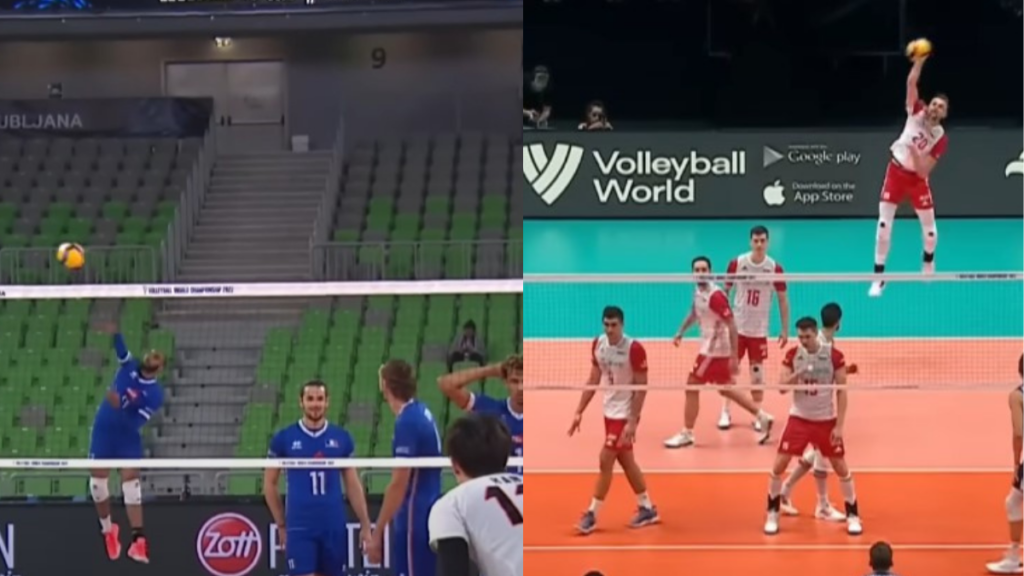
3. Arm Swing
When players jump as high as they can, they start to swing their arms. They pull their hitting arm back, bend their elbow, and then quickly swing it forward with a lot of power. They want to hit the ball at the highest point they can reach, which helps them hit the ball down towards the ground on the other side of the net.
You may watch coach Donny’s video for a practical demonstration of the Arm swing technique.
4. Contact
When the player’s hand touches the ball, it’s a very important moment. Players try to hit the ball with their hands open, using the palm of their hand to make the ball go fast and hard. They must keep their wrist strong to control the ball and make it go where they want. When they hit the ball correctly, they can make it go to different parts of the other team’s side of the court.
5. Follow Through
After hitting the ball, players need to keep swinging their arms forward. This helps the ball stay strong and go in the direction they want. The player’s arm should keep moving forward, and their hand should point to the spot on the other team’s court where they want the ball to go.
Types of Volleyball Kills
There are several types of kills in volleyball, each with unique characteristics and purposes. Let’s explore some of the most common ones:
1. Power Kill
A power kill, which some people call a “bomber” or “spike,” is the most basic type. The player hits the ball as hard as possible to do a power kill. They try to hit the ball harder than the other team can block or defend. Players usually do power kills when the ball is set high and close to the net. This lets them use all their strength to hit the ball hard.
2. Off-Speed Kill
An off-speed kill, also known as a “tip” or “roll shot,” is a trick shot that focuses on where the ball goes rather than hitting it hard. Players don’t use all their strength to hit the ball. Instead, they softly tap or roll the ball over the hands of the players trying to block.
This catches the other team by surprise. Off-speed kills work well when the other team’s blockers think the player will hit the ball hard.
3. Back Row Kill
A back-row kill occurs when a player attacks from behind the attack line, typically from the back-row positions. These kills require precise timing and coordination with the setter, as the ball must be set higher and farther from the net.
Back-row kills can be particularly effective when the opponents are focused on defending against front-row attackers.
4. Slide Kill
In a slide kill, the attacking player starts in the middle of the court. They move towards the ball at an angle, not straight on, which allows them to hit the ball from the side of the player who set it.
Doing this can surprise the other team because they might not expect the ball to come from that direction. Players use slide kills when they see open spaces between the players on the other team trying to block.
Factors Affecting Kill Effectiveness
Several factors can influence the effectiveness of a kill in volleyball. Here are some key considerations:
1. Setter-Hitter Connection
The setter and the hitter must work together closely for a kill to work well. The setter must give the hitter a good set, putting the ball in the right spot. This gives the hitter the best chance to hit the ball hard and exactly where they want it to go.
The setter and hitter need to talk to each other and understand what the other is doing. This helps them make kills happen more often.
2. Blocking
The players on the other team trying to block the ball are crucial for stopping kills. If they make a good block, it can make the attack much weaker. They can change how the ball moves or make the hitter have to hit it differently.
When hitters are trying to get a kill, they must think carefully about where to hit the ball. They should try to hit the ball around or over the blocker.
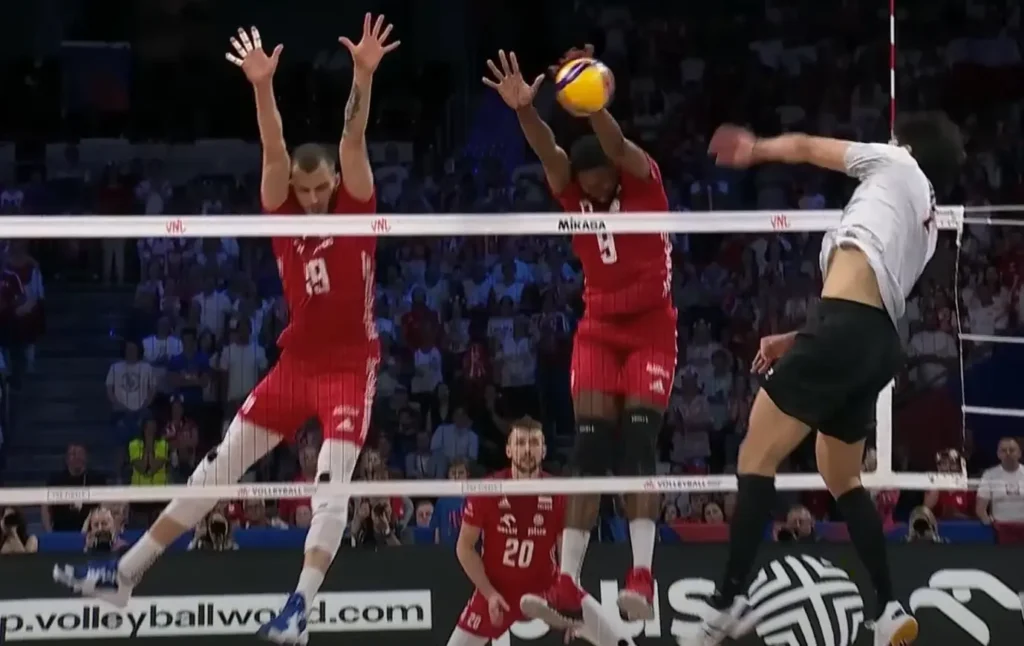
3. Defensive Positioning
The positioning and reaction time of the opposing team’s defense can greatly impact the success of a kill. The defending players need to consider where the ball might go and how fast it will come. They have to move quickly to dig or get the ball.
Hitters should try hitting the ball differently and aim for spaces between the defending players. This helps them have a better chance of getting a kill.
4. Court Conditions
The condition of the court itself can affect the execution of kills. Factors such as the type of flooring, humidity levels, and lighting can all influence how the ball travels and bounces. Players must adapt their approach and contact based on the specific court conditions to maintain kill effectiveness.
The Role of Kills in Volleyball Strategy
Kills are individual achievements and play a crucial role in a team’s overall strategy. Here’s how kills fit into the bigger picture of volleyball gameplay:
1. Offensive Tactics
Teams usually make their attack plans based on their best hitters, who can often get kills. Setters will try to give the ball to these strong hitters when it matters most, especially when they see a weak spot in the other team’s defense. Coaches might also come up with special plays or ways to stand on the court that help their hitters have better chances to hit the ball and score.
2. Rotational Hitting
In volleyball, players rotate positions after each side out. This means that hitters must be versatile and able to execute kills from various spots on the court. Teams may strategically position their strongest hitters in the front row during crucial rotations to maximize their offensive potential.
3. Serving and Passing
While kills are the ultimate goal of an offensive play, they are heavily influenced by the quality of the team’s serving and passing. A well-placed serve can pressure the opposing team’s passers, making it difficult for them to set up a strong attack. Similarly, accurate passing is essential for allowing setters to distribute the ball effectively to the hitters.
The Bottom Line
To sum up, a kill in volleyball is a powerful and exciting aspect of the game that showcases individual skill and contributes to a team’s success. It is essential for players and fans to understand what a kill is in volleyball, how it’s executed, and its strategic importance.
By mastering the techniques of hitting kills and incorporating them into a cohesive team strategy, volleyball players can elevate their game and lead their team to victory.
Whether you’re a beginner learning the fundamentals or an experienced player looking to refine your skills, focusing on executing consistent and effective kills will undoubtedly take your volleyball abilities to new heights. So, go play on the court, work on your moves, and start scoring lots of points.
Frequently Asked Questions
What is the difference between a kill and an attack in volleyball?
An attack in volleyball is any offensive attempt to score a point by hitting the ball over the net. On the other hand, a kill is a successful attack that results in an immediate point for the attacking team. In other words, all kills are attacks, but not all attacks result in kills.
Can a kill be scored from any position on the court?
Yes, kills can be scored from various positions on the court. Front-row players are the most common attackers, such as outside hitters, middle blockers, and opposite hitters. However, back-row players can score kills behind the attack line, typically on a higher set.
What is a “kill block” in volleyball?
A kill block, also known as a “stuff block,” occurs when a defensive player or players block an attack, and the ball immediately hits the floor on the attacking team’s side, resulting in a point for the blocking team. Kill blocks are counted as both a block and a point for the defending team.
How can a team defend against powerful kills?
Teams can defend against powerful kills by forming a strong block at the net and positioning their defenders strategically. Blockers should attempt to close the gaps between their hands and penetrate over the net to reduce the available hitting angles.
What is the role of a libero in kills?
A libero is a defensive specialist who plays in the back row and wears a contrasting jersey color. While liberos cannot directly attack the ball or score kills, they are crucial in preventing opposing kills. They are skilled at digging powerful attacks and keeping the ball in play, allowing their team to transition from defense to offense and potentially score their kills.
